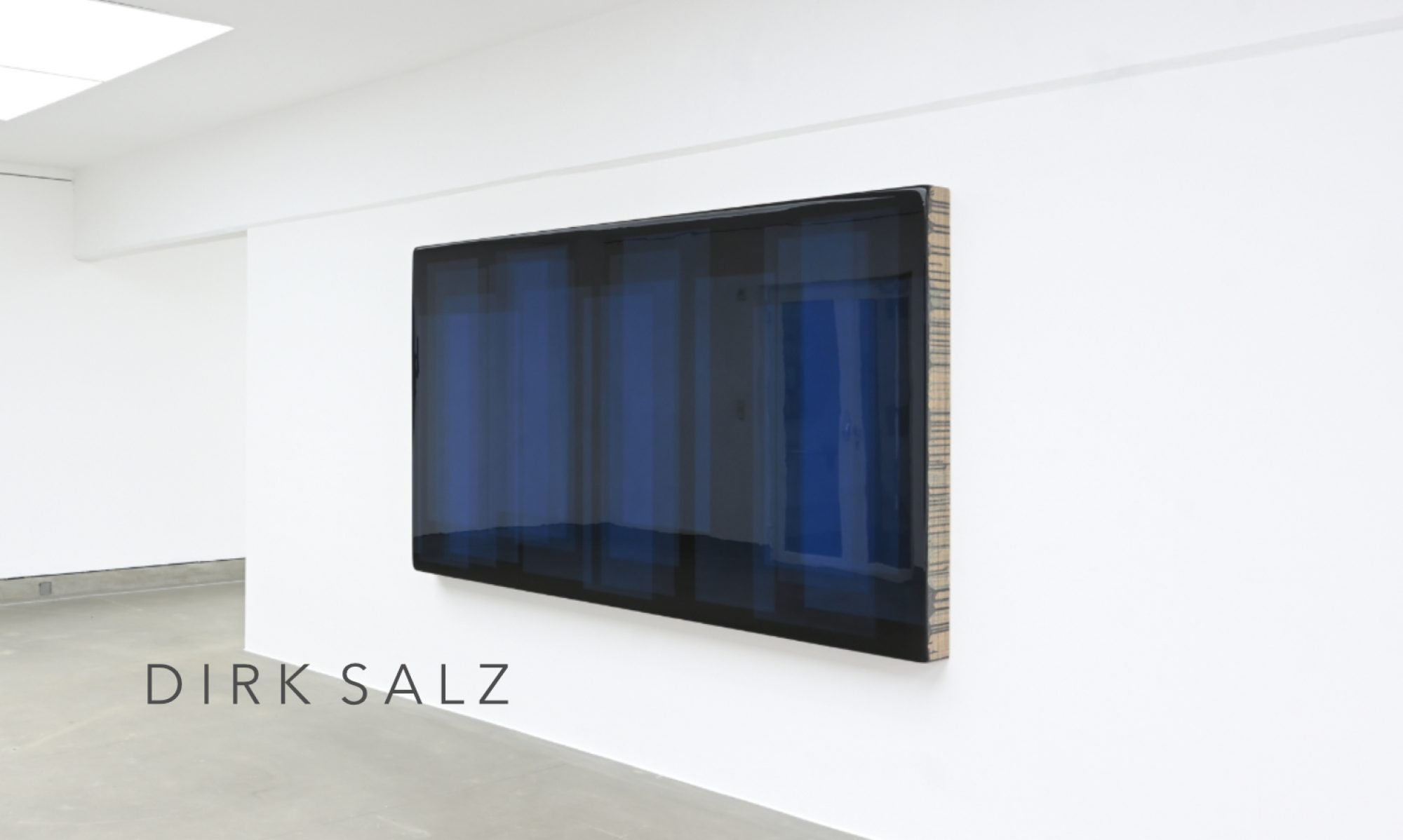If spaces as experiential motifs are constructed like pictures, pictures become both models and their afterimages
How Dirk Salz enters his pictures with his Wuppertal Room
by Prof. Raimund Stecker
Pictures almost always harbour spatial illusions. This is true even when they attempt to expose their factual flatness as a genuine pictorial value identical to themselves. No factually flat monochrome surface appears truly monochrome and flat, and neither does any deceptively decurved one.
Spaces, on the other hand, are – and as such, at least without illusions – spatial! They are spatial in the three-dimensional sense and are extended by the factor of time in the four-dimensional sense, if not even factually poly-dimensional due to seeing and seeking, exploring and scrutinising, consciously perceiving and repeatedly surprised viewing.
Spaces can thus also create the illusion of images – can even evoke and catalyse them. It is spaces that offer our vision the intersecting surfaces through our double-monocular visual pyramids and thus the projection surfaces in our spatial perspectives.
So much for the cursory theoretical background to Dirk Salz’s 2023 experiential space in the CAMPUSHALLE in Wuppertal, which continually offered visual surprises. The creator of highly complex pictorial bodies[1] had left his metier of sublimating two-dimensionality and ascended into the highest depths of valley-peak spatial factualities, knowing that once you pass the apex, the path is always downhill to the next turning point – and so on and so forth…
In the CAMPUSHALLE, you looked to the left while simultaneously looking ahead; you focused on the rear while, without turning, looking into the right-hand corner; you thought you were in front of the one-way mirror yet saw yourself reflected behind it… Vistas were stopped by reflection, and mirror images were unsealed by transparency. Stability and footing were diluted, as it were, and at the same time, polyfocal perspectives were frozen into supposed picture frames… That which imposed itself to be fixed by vision rotated in circles, and those striving to make sure of this spun in circles, too!
The German Irre (lunatic) in Irritation made a brilliant appearance and disappeared just as effectively as the emerging VerwIRREnde (bewildering), a word concluding with Ende (end). You were only brought back to a secure state of stability if you cognitively assured yourself that you were merely standing with closed eyes. If, on the other hand, you sought to rely on your ‘seeing vision’[2] whilst seeing: while walking and standing, while seeing or standing while walking, or even walking while standing, you ran the risk of abandoning your physical-psychic search for orientation as a psycho-physical act of insurance. You began to suspect that, ultimately, you would only leave the world into what you had left behind. Until then, however, it was advisable – even if it like a rat race – to leave your abandonment to save yourself.
In fact, everything was simple in terms of materials. You entered the CAMPUSHALLE. Dominating attractions were rectangularly cut blue screens in a ‘good’ window format suspended centrally in the space from the shed roof. White picture steles on the walls were repeated like zip codes, visually superseding the industrial hall’s plain wall areas. Glass panes stacked against the walls, placed wide apart on the floor and increasingly closer together towards the walls, dissolved the building’s demarcation surfaces even more obviously. They reflected the centrally hanging screens and myself as the viewer, thus dematerialising the walls for our eyes. And four glass surfaces, slightly larger than our bodies, stood in the middle of the room on the rough screed floor. Exhibition aesthetics typical of the Ruhr region in Wuppertal!
Yet – the whole scene was imbued with a never-ending enchantment. The crystalline, faceted blue shadows of the screens on the floor seemed to cut the ground from under your feet. The floor-parallel views, intensifying in both brightness and darkness, further increased this loss of security. And the belief that the white picture steles on the walls would provide support proved to be yet another conceivable delusion when viewed. For their unequal widths were visually counteracted in their factual unequal widths, just as the centrally positioned glass surfaces as sculptural bodies asserted a spatial centre, but visually camouflaged it in a visually carousel-like activated manner. Labyrinth, ghost train, hall of mirrors…
Dirk Salz took three steps ahead with his Wuppertal Room, only to arrive (back) behind himself after taking further steps. He undertook an experiment that proved to be unpredictably predictable. He created a space like motifs for his ‘only’ imaginatively accessible pictures, thus reversing what has been customary since the monocular pyramidal vision became normative. We have become accustomed to seeing through the eye of artists on their pillion, i.e. to having the whole world depicted in our organ of perception in a focused and concentrated way. In Wuppertal, Dirk Salz placed us in this world, one that is yet to be seen, perceived, and not ‘just’ seen again as a pictorial image. His ‘space’ in the CAMPUSHALLE in Wuppertal thus mutated into a realisation of his pictorial motifs entrusted only to our individual experience. And conversely, seen in this way, a model has since also been incorporated into his previously pure, image-free pictures, to which his Wuppertal Room relates as an imagined image.
————————————————-
1 Raimund Stecker, Searching for the Little Patch of Yellow Wall. On painted pictures without certainties by Dirk Salz, in: PAINTING THE ABSOLUTE (Berlin/Bielefeld: Kerber Verlag, 2017), 53ff.
2 Max Imdahl, Cézanne – Braque – Picasso / Zum Verhältnis zwischen Bildautonomie und Gegenstandssehen, in: Bildautonomie und Wirklichkeit – Zur theoretischen Begründung moderner Malerei (Mittenwald: Mäander-Kunstverlag, 1981), 9ff.
